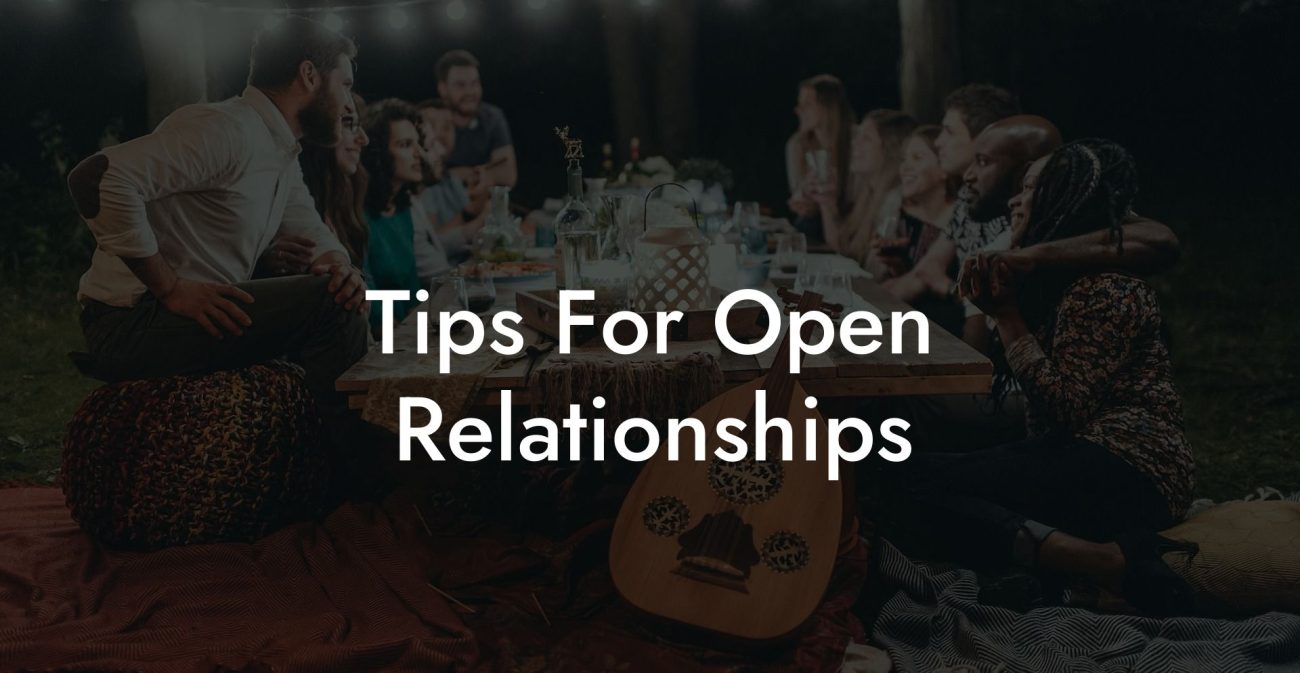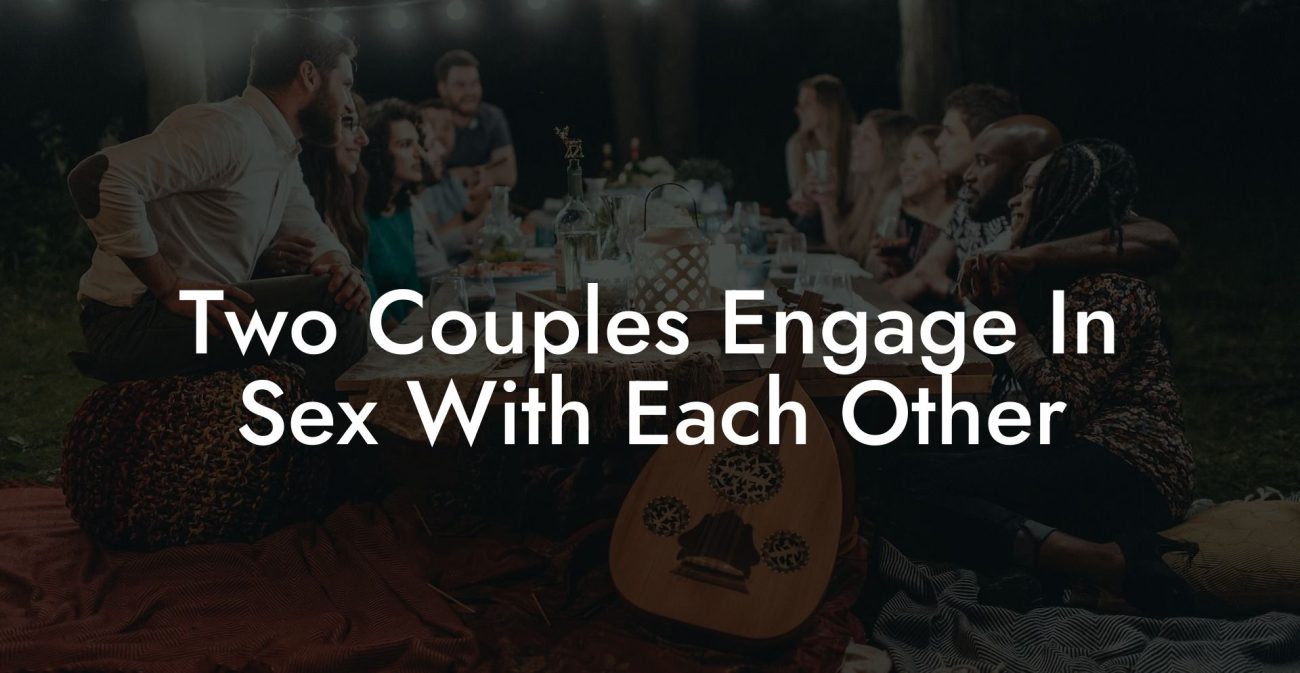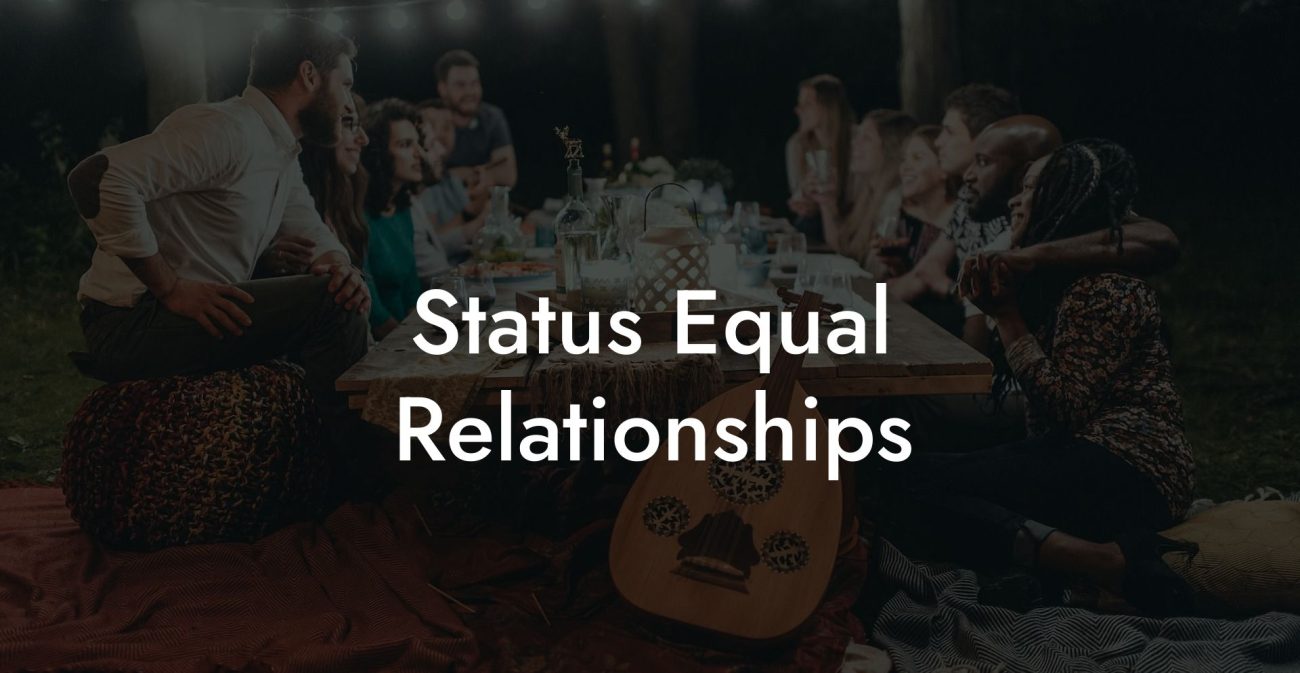Polygamous Definition And: Definition & Meaning

Polygamous relationships challenge conventional norms by involving multiple spouses or partners simultaneously. In this guide, we explore what a polygamous relationship is, examine its historical roots and cultural significance, and delve into the legal, ethical, and emotional dynamics that shape these relationships. Whether you are a researcher, student, or simply curious about alternative forms of intimate partnerships, this resource offers in-depth insights and practical strategies to help you navigate the multifaceted world of polygamous relationships.
Have you ever wondered if monogamy is just a stupid little experiment? Open relationships, polyamory, relationship anarchy...find out which relationship dynamic suits you best with our one minute relationship test. See if you are just conforming to "societal norms". Reveal your truth >>
Quick Links to Useful Sections
- Definition and Core Concepts
- What Is a Polygamous Relationship?
- Etymology and Key Terminology
- Historical Context and Cultural Significance
- Historical Roots of Polygamous Relationships
- Cultural Significance Today
- Legal and Ethical Considerations
- Legal Recognition and Challenges
- Ethical Considerations
- Psychological and Emotional Dynamics
- Emotional Complexity
- Psychological Benefits
- Psychological Challenges
- Comparing Polygamous Marriage with Other Relationship Models
- Polygamous Marriage vs. Monogamous Marriage
- Polygamous Marriage vs. Polyamory
- Benefits and Challenges of Polygamous Marriages
- Benefits
- Challenges
- Practical Strategies for Navigating a Polygamous Marriage
- Enhance Communication
- Establish Clear Boundaries
- Prioritize Self-Care
- Build a Supportive Community
- FAQ: Your Polygamous Relationship: Definition & Meaning Questions Answered
Definition and Core Concepts
What Is a Polygamous Relationship?
A polygamous relationship is a marital arrangement in which one individual is simultaneously married to or in a committed relationship with more than one partner. Unlike monogamous relationships, which involve an exclusive bond between two people, polygamous relationships embrace the idea of multiple marital or partnership connections at the same time. These relationships are typically based on the principles of consent, transparency, and mutual respect. While polygamous relationships are most often associated with polygyny (one man with multiple wives), they can also take the form of polyandry (one woman with multiple husbands) or other non-traditional configurations.
Etymology and Key Terminology
The term “polygamy” originates from the Greek prefix “poly-” meaning “many” and the Greek word “gamos” meaning “marriage.” Therefore, it literally translates to “many marriages.” When we use the term “polygamous relationship,” we refer to any relationship structure in which an individual maintains more than one marital bond concurrently.
Key related terms include:
- Polygyny: A form of polygamy where one man is married to multiple women.
- Polyandry: A form of polygamy where one woman is married to multiple men.
- Plural Marriage: An alternative term emphasizing the presence of multiple marital bonds within a single family unit.
Historical Context and Cultural Significance
Historical Roots of Polygamous Relationships
Polygamous relationships have been part of human society for millennia. In many ancient cultures, polygamy was a pragmatic solution to various social and economic challenges. For instance, in agrarian societies, having multiple spouses could mean a larger workforce to manage crops and livestock, thereby enhancing the family’s overall productivity. In some cultures, polygamy was also a symbol of wealth and social status.
Historical records reveal that polygyny was widely practiced in regions of Africa, the Middle East, and Asia. In these societies, a man’s ability to marry multiple women often signified prosperity and influence. Similarly, in parts of Tibet, Nepal, and India, polyandry emerged as a practical solution to preserve family land and prevent its division among too many heirs. In these settings, fraternal polyandry—where a woman marries two or more brothers—helped maintain economic stability and ensure that family resources remained consolidated.
Cultural Significance Today
Today, cultural attitudes toward polygamous relationships vary significantly around the world. In communities with deep historical roots in polygamy, these relationships are often seen as a natural and respected part of the social fabric. They are viewed as a practical means to strengthen family bonds, manage resources, and maintain social cohesion.
In contrast, many modern Western societies, which largely adhere to monogamy as the legal and cultural norm, may view polygamous relationships with skepticism or disapproval. Legal restrictions and social stigma often challenge the acceptance of polygamy in these contexts. However, academic data-statistics-ethical-non-monogamy-open-relationships-polyamory/" target="_blank">research and cultural discussions continue to explore the potential benefits and complexities of polygamous relationships, prompting a reexamination of what constitutes a healthy and sustainable family structure.
Legal and Ethical Considerations
Legal Recognition and Challenges
In most contemporary legal systems, marriage is defined as a union between two people, making polygamous marriages generally non-recognized under state law. This lack of legal recognition can lead to numerous challenges:
- Inheritance and Property Rights: Without legal recognition, the rights of additional spouses regarding property distribution and inheritance can be unclear.
- Custody and Family Law: Issues related to child custody and spousal benefits may arise, as legal frameworks are typically designed to support monogamous marriages.
- Spousal Benefits: Access to benefits such as healthcare, social security, and taxation advantages may be limited or unavailable to individuals in polygamous relationships.
In some regions where polygamy is culturally accepted, customary or religious laws provide a framework for these unions. However, these legal structures often exist in parallel with national laws and may not offer the same level of protection or consistency.
Ethical Considerations
Ethical polygamy emphasizes the importance of informed consent, mutual respect, and transparent communication. In an ideal polygamous marriage, every partner enters into the relationship voluntarily and is fully aware of the structure and expectations. Key ethical principles include:
- Informed Consent: All parties must understand and agree to the relationship dynamics before joining the union.
- Mutual Respect: Each partner's needs, boundaries, and individuality should be acknowledged and respected.
- Transparency: Ongoing open dialogue is essential for addressing issues, renegotiating boundaries, and maintaining trust among all partners.
- Equity: Striving for fairness in power dynamics and resource distribution is critical, especially in contexts where traditional practices may have led to gender imbalances.
Psychological and Emotional Dynamics
Emotional Complexity
Polygamous relationships can offer a rich tapestry of emotional support, as multiple spouses contribute different strengths, perspectives, and forms of care. For many individuals, this diversity of support leads to increased resilience, personal growth, and a sense of community. The collaborative nature of a polygamous marriage can foster a nurturing environment where each partner plays a role in the overall well-being of the family.
However, the emotional dynamics in polygamous relationships are inherently complex. Managing multiple intimate bonds can give rise to challenges such as jealousy, feelings of neglect, and competition for attention. These issues require a high level of emotional intelligence and effective communication to navigate successfully.
Psychological Benefits
Individuals in polygamous marriages may experience several psychological benefits:
- Diverse Emotional Support: Multiple spouses can provide varied perspectives and types of care, leading to a more robust support system.
- Collaborative Problem Solving: The collective approach to household management and decision-making can foster a sense of unity and shared purpose.
- Personal Growth: The challenges of balancing complex relationships often lead to increased self-awareness, resilience, and improved communication skills.
Psychological Challenges
Despite the benefits, polygamous relationships also pose significant psychological challenges:
- Managing Jealousy: Jealousy and insecurity are common in any relationship but can be amplified in a polygamous setting if boundaries are not clearly communicated and respected.
- Emotional Burnout: The need to balance the emotional demands of multiple spouses can sometimes lead to stress and burnout.
- Social Pressure and Stigma: Facing societal judgment and legal limitations can impact mental health and overall well-being.
Comparing Polygamous Marriage with Other Relationship Models
Polygamous Marriage vs. Monogamous Marriage
Monogamous marriages involve an exclusive, one-to-one partnership, which simplifies the emotional, legal, and logistical aspects of the relationship. In contrast, polygamous marriages incorporate multiple marital bonds, which can enhance resource sharing and social support but also introduce complexity in managing interpersonal dynamics and legal rights.
Polygamous Marriage vs. Polyamory
Polyamory is a form of consensual non-monogamy that focuses on maintaining multiple romantic or sexual relationships without necessarily formalizing them through marriage. While polyamory and polygamy share the principle of consensual non-monogamy, polyamory tends to be more flexible and less structured legally. Polygamous marriages, on the other hand, are formal unions that are often rooted in cultural or religious traditions.
Benefits and Challenges of Polygamous Marriages
Benefits
- Diverse Support Network: Multiple spouses can provide varied forms of emotional, practical, and financial support, creating a resilient family structure.
- Economic Stability: In many traditional contexts, polygamous marriages help consolidate resources, ensuring that property and wealth remain within the family.
- Cultural Identity: In societies with a long history of polygamy, plural marriages reinforce cultural heritage and social cohesion.
- Shared Responsibilities: The division of labor and responsibilities among multiple spouses can lead to a more efficient and collaborative household.
Challenges
- Legal Non-Recognition: Polygamous marriages are generally not recognized by modern legal systems, leading to challenges in inheritance, custody, and spousal benefits.
- Emotional Complexity: Balancing the emotional needs and expectations of multiple partners requires advanced communication and conflict resolution skills.
- Social Stigma: Polygamy often faces legal and social scrutiny in societies that predominantly support monogamy, which can affect the psychological well-being of those involved.
- Power Dynamics: Traditional practices of polygamy have sometimes led to unequal power distribution, and ensuring fairness among all spouses can be challenging.
Practical Strategies for Navigating a Polygamous Marriage
Enhance Communication
Open, honest, and regular communication is crucial. Consider scheduling regular family meetings or one-on-one check-ins with each spouse to discuss feelings, expectations, and any emerging issues.
- Practice active listening and use "I" statements to express personal emotions without assigning blame.
- Utilize digital tools, such as shared calendars and group chats, to coordinate schedules and responsibilities.
Establish Clear Boundaries
Developing written or digital agreements can help clarify roles, responsibilities, and expectations. Clearly defined boundaries are essential for preventing misunderstandings and ensuring that every partner feels respected.
- Outline financial responsibilities and asset distribution.
- Define personal time versus shared activities.
- Set protocols for conflict resolution and regular review of relationship dynamics.
Prioritize Self-Care
Taking care of your emotional, physical, and mental health is essential. Establish a self-care routine that includes regular exercise, mindfulness practices, and hobbies that foster personal growth.
- Engage in activities that recharge you.
- Consider professional counseling or therapy to help manage complex emotions.
- Maintain a balanced lifestyle that supports your overall well-being.
Build a Supportive Community
Connecting with others who share your relationship model can provide invaluable support and advice. Consider joining online forums, social media groups, or local meet-ups focused on alternative relationship models.
- Join online communities such as r/polyamory.
- Attend workshops and webinars on ethical non-monogamy and family dynamics.
- Engage with support networks that understand the challenges of polygamous marriages.
FAQ: Your Polygamous Relationship: Definition & Meaning Questions Answered
1. What does "polygamous relationship" mean?
A polygamous relationship is a marital arrangement where an individual is married to or involved in committed relationships with more than one spouse simultaneously.
2. How is polygamy defined?
Polygamy is defined as the practice of having multiple spouses at the same time. This typically includes forms such as polygyny (one man with multiple wives) and polyandry (one woman with multiple husbands).
3. What are the historical roots of polygamous relationships?
Polygamous relationships have been practiced for thousands of years in various cultures. They often emerged as practical solutions to social, economic, or environmental challenges, such as preserving family wealth or managing limited resources.
4. What legal challenges do polygamous marriages face?
In most modern legal systems, marriage is defined as a union between two people. Therefore, polygamous marriages are generally not legally recognized, which can lead to complications regarding inheritance, custody, and spousal benefits.
5. What ethical principles underpin ethical polygamy?
Ethical polygamy is based on informed consent, mutual respect, transparent communication, and equity among all participants. Every partner should willingly and fully agree to the relationship arrangement.
6. Where can I find additional resources on polygamous relationships?
Additional resources include books like "The Ethical Slut" by Dossie Easton & Janet Hardy and "More Than Two" by Franklin Veaux & Eve Rickert, podcasts such as "Multiamory" and "Polyamory Weekly," and online communities like r/polyamory.
Resources and Community Support: Your Next Steps
- "The Ethical Slut" by Dossie Easton & Janet Hardy – A seminal text exploring various models of consensual non-monogamy and providing deep insights into alternative marital structures.
- "More Than Two" by Franklin Veaux & Eve Rickert – A guide offering practical advice on managing the dynamics of multiple relationships.
- Podcasts: Listen to "Multiamory" and "Polyamory Weekly" for engaging discussions and personal stories about polygamous and polyamorous relationships.
- Online Communities: Join forums such as r/polyamory to exchange ideas, experiences, and receive support.
- Workshops and Webinars: Attend events focused on ethical non-monogamy and relationship psychology to expand your knowledge and connect with like-minded individuals.
By exploring these resources and applying the strategies outlined in this guide, you can develop a clear and informed understanding of what a polygamous relationship entails, along with its historical, legal, ethical, and emotional dimensions. Embrace continuous learning, open dialogue, and self-reflection as you explore the diverse landscape of alternative marital arrangements.
Lost & confused by all of the terms, types and seemingly made up 3 letter acronyms?? We've got you. Check out our Ethnical Non-Monogamy Dictionary >>
Useful Interruption: Not sure which relationship vibe fits you best? Take our Relationship Test, it’ll give you the real insight into your natural relationship style. Then, dive into our binge-worthy guides (from the tried-and-true to the “wait, that’s a thing?”) and find the perfect relationship type for your life:
- Monogamy
- Open Relationships
- Ethical Non-Monogamy
- Solo Polyamory
- Non-Hierarchical Polyamory
- Hierarchical Polyamory
- Relationship Anarchy
- Swinging
Now back to the main article but yeah take the test...












